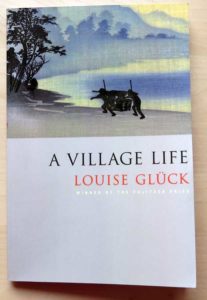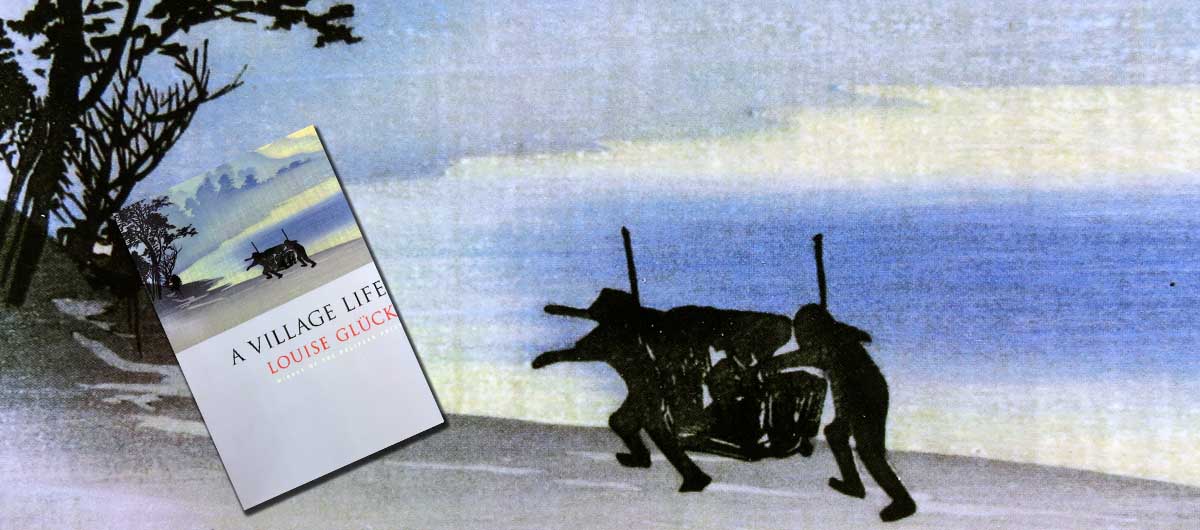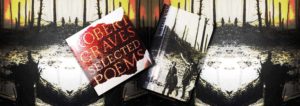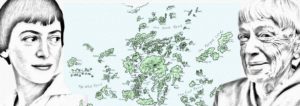I don’t think there’s a single right way to read poetry. It must depend on the poem, on the reader, on the situation. Probably on other factors too. Likewise, I don’t think there’s a single right way to take oneself through a book of poetry. These thoughts arise because I’m reading A Village Life by Louise Glück, and I’m consciously trying to read it in a different way from the way I usually read poetry books. It’s an experiment.
My poetry bookshelf
After writing the above, I went to my poetry bookshelf. Almost all the books of poetry I have are anthologies. Student selections like my Penguin edition of The Metaphysical Poets and Seamus Heaney’s and Ted Hughes’s collection for Faber, The Rattle Bag, well thumbed and broken backed after 40 odd years use. An Anthology of English and American Verse with strips of paper marking dozens of poems that I used when I was teaching. The Oxford Book of English Verse, The Norton Anthology, Poems on the Underground, American’s Favourite Poems, The Nation’s Favourite Poems, Other Men’s Flowers.
All of these I’ve read and re-read by dipping into them. It’s more or less the same way that I read anthologies of short stories, essays, magazines.
Single collections
I find myself searching along the shelf for books of poetry that are not anthologies. It seems I don’t have very many. Black and White in Love by Mbella Sonne Dipoko, which I bought in a Leeds student bookshop at the end of the 70s. (On a topical side note, I’d like to recommend this volume to Piers Morgan. To give him something to learn from in all the free time he will have, now he has quit pouring his poison over Good Morning Britain.)
Another single volume is Anne Stevenson’s The Fiction Makers. I think it was a Poetry Society selection sometime in the 1980s. I was a member of the Poetry Society for a few years. They used to send members three or four selected books of poetry every year. I think this is the only one of their selections I’ve still got.
There’s Ursula Le Guin’s final volume of verse So Far so Good. Bought two years ago after hearing of her death. There’s Oliver Reynolds’s The Oslo Tram. Bought specifically for that poem, The Oslo Tram. I read it first in The London Magazine, in a library somewhere, and wanted to own a copy. And now I’m wondering what happened to Wendy Cope’s books. And surely I have other single volumes? I used to. There must be a storage box full of poetry somewhere inaccessible.
Louis Glück
My knowledge of modern poetry is very haphazard. I’d never read anything by Louise Glück, or even knew her name, before she won the Nobel Literature Prize. But because she won the Prize, my local bookshop (which does not usually carry poetry, let alone poetry in English), was displaying a whole clutch of her titles. I picked up A Village Life under the impression that it was her most recent volume. (It doesn’t appear to be.) I also liked the picture on the front cover.
I can’t remember how I read any of the collections I mentioned above. It was either the same way I read anthologies, dipping and sipping like a woodland bird drinking from a puddle. Or it was the way I read novels, starting at the front and reading to the end. I’m not doing either with A Village Life.

Reading A Village Life
Instead I’m reading it in twenty minute sessions every morning. The book contains about forty poems. Some are two or even three pages long; most fill one page, or one and a half. I start each day with a new poem, or two poems if they are short, reading them slowly. Then I flip back through the book two or three pages at a time to re-read the poems that turn up. I finish off by re-reading the newest poem or poems again. This way, it’s taken me twenty-two days to reach page 63 and I have eight pages and four poems left to go.
Reading like this, slowly and deliberately with much repetition, I feel I’m getting more out of the poems and more out of the collection. It helps that they are good poems with a lot packed in. They deserve and reward re-reading. The re-reading-by-chance helps me reconsider poems I didn’t enjoy on first reading. Helps me find things to like there after all. (The first Bats poem and the first Earthworm poem in particular.) And then it’s a little shiver of delight when chance brings me back to a poem I liked from the first. (Noon, At the River, A Slip of Paper.)
Thinking about it, writing this, I see my preference is for the narrative poems. Poems that tell a story. I prefer these to the philosophical ones contemplating mortality and mutability. But that’s not a surprise. And there are some fine images and turns of phrase, also a pleasure to come back to, in poems of both sorts.
Excerpts
No one really understands
(from Pastoral)
the savagery of this place,
the way it kills people for no reason,
just to keep in practice.
once you enter the earth, you will not feel the earth;
(from Earthworm)
once you inhabit your terror,
death will come to seem a web of channels or tunnels like
a sponge’s or honeycomb’s, which, as part of us,
you will be free to explore.
By late spring she’ll be garrulous, but now she’s down to two words,
(from March)
never and only, to express this sense that life’s cheated her.
Never the cries of the gulls, only, in summer, the crickets, the cicadas.
Very gently, she moves the sheet aside.
(from A Night in Spring)
And under it there is her body, still beautiful and new
with no marks anywhere. And it seems to her still
identical to her mind, so consistent with it as to seem
transparent, almost
and once again
she falls in love with it and vows to protect it.
There is a path you cannot see, beyond the eye’s reach
(from Bats)
what the philosophers have called
the via negativa: to make a place for light
the mystic shuts his eyes – illumination
of the kind he seeks destroys
creatures who depend on things.




